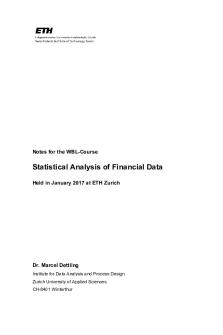Descriptive Statistics CH 4 PDF

| Title | Descriptive Statistics CH 4 |
|---|---|
| Course | Statistics In Psychology |
| Institution | University of New Hampshire |
| Pages | 2 |
| File Size | 102.4 KB |
| File Type | |
| Total Downloads | 80 |
| Total Views | 144 |
Summary
Jolie Wormwood
Descriptive statistics...
Description
CHAPTER 4: DESCRIPTIVE STATSTICS MEASURES OF CENTRAL TENDENCY Descriptive statistics - Describe data o Data from your sample - Two main categories Measures of central tendency - Describe most typical or most common value of a variable in your data: - 3 measures of central tendency o Mean, median, and mode o Mode: reflects the most frequent value in a distribution Ex: 5,2,6,5,7,8,2,5 Reorder data set smallest to largest o 5 is the mode Bimodal or multimodal is when you have two modes Pros: easy to identify Not as sensitive to extreme values Cons: Based on a singular value (not as representative of the entire data set) Not always useful in comparing data sets o Median: reflects the middle value when observations are ordered from smallest to largest (or vice versa); a ‘balance point’, with an equal number of values above and below Ex: 2,2,9,6,8,8,9,1,2,3,7,4 Order from smallest to largest 4+6=10/2=5 Pros: Takes all values into account Not sensitive to extreme values o 11,12,13,14,15 13 is the median o 11,12,13,14,20 13 is the median Cons Can be difficult to compute (by hand) with a large number of values May not be an actual value in the data set (if even number of values) May not be a very common value in the data set o Mean: mathematical average and most commonly used measure of central tendency Obtained by Adding up all the individual numbers for variable EX Dividing by the sum of values by N M=EX/N Notation
CHAPTER 4: DESCRIPTIVE STATSTICS MEASURES OF CENTRAL TENDENCY
N= mean or X bar X= individual score N= number of participants/observations Xi: subscripts indicate an individual score o X1= 1 participant X2= two participants E=summation sign The mean serves as the algebraic balance point if a distribution (the mathematical ‘middle’): Whereas the median balances the number of values on either side, the mean balances the distances between the mean and values on either side For a given variable, if you take the distance between each individual value for the mean, and you add them all up, the sum will always be 0 o Negative sum will equal positive sum Pros: All values are included in its calculation Cons: Very sensitive to extreme values o Bell shaped distribution Values of mean, median, and mode are close together o Bimodal (or polarized) distribution Mean and median are not good ways to describe typical responses o Skewed distribution Mean gets pulled towards larger numbers If a frequency distribution is skewed the median, and one or more modes, may be better indicators of central tendency more than the mean Categorical data - Mean is never appropriate - Mode is always appropriate...
Similar Free PDFs

Descriptive Statistics CH 4
- 2 Pages

descriptive statistics Ch 2
- 90 Pages

Week 4: Descriptive Statistics
- 9 Pages

Descriptive Statistics
- 3 Pages

Descriptive Statistics
- 2 Pages

Descriptive Statistics
- 23 Pages

Descriptive Statistics
- 5 Pages

W3 Descriptive Statistics
- 3 Pages

Module 3: Descriptive Statistics
- 2 Pages

Descriptive Statistics Understanding
- 47 Pages
Popular Institutions
- Tinajero National High School - Annex
- Politeknik Caltex Riau
- Yokohama City University
- SGT University
- University of Al-Qadisiyah
- Divine Word College of Vigan
- Techniek College Rotterdam
- Universidade de Santiago
- Universiti Teknologi MARA Cawangan Johor Kampus Pasir Gudang
- Poltekkes Kemenkes Yogyakarta
- Baguio City National High School
- Colegio san marcos
- preparatoria uno
- Centro de Bachillerato Tecnológico Industrial y de Servicios No. 107
- Dalian Maritime University
- Quang Trung Secondary School
- Colegio Tecnológico en Informática
- Corporación Regional de Educación Superior
- Grupo CEDVA
- Dar Al Uloom University
- Centro de Estudios Preuniversitarios de la Universidad Nacional de Ingeniería
- 上智大学
- Aakash International School, Nuna Majara
- San Felipe Neri Catholic School
- Kang Chiao International School - New Taipei City
- Misamis Occidental National High School
- Institución Educativa Escuela Normal Juan Ladrilleros
- Kolehiyo ng Pantukan
- Batanes State College
- Instituto Continental
- Sekolah Menengah Kejuruan Kesehatan Kaltara (Tarakan)
- Colegio de La Inmaculada Concepcion - Cebu





